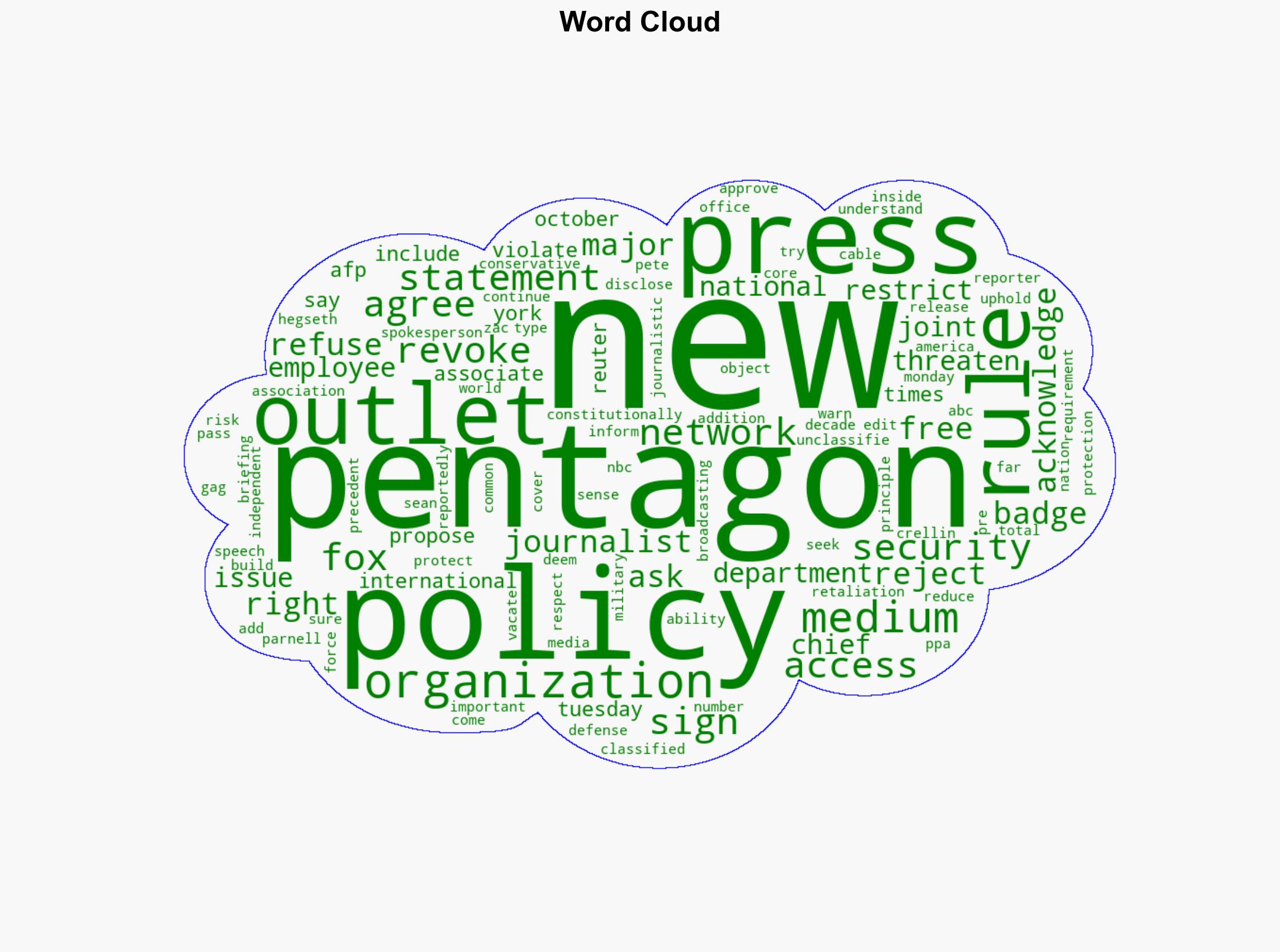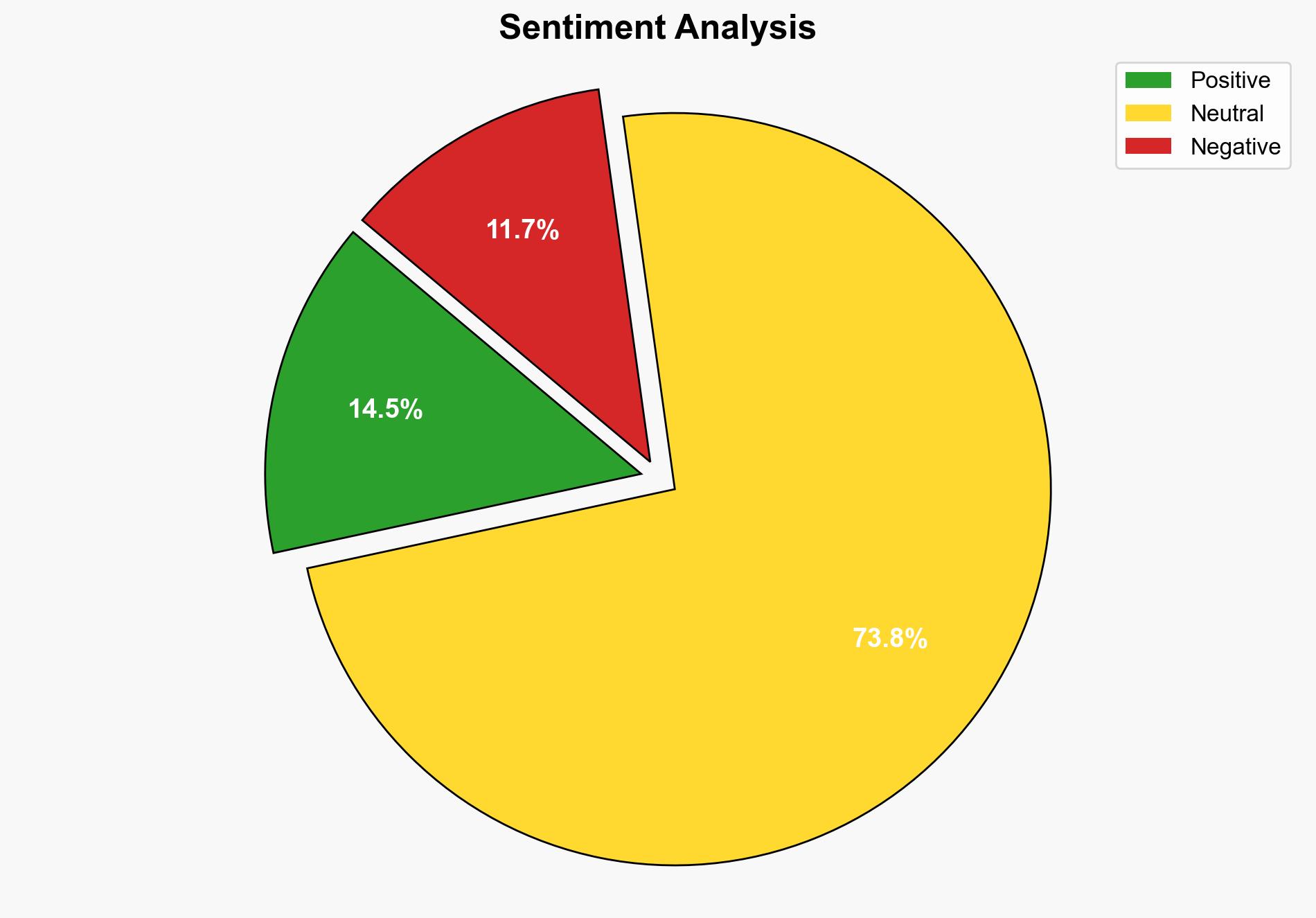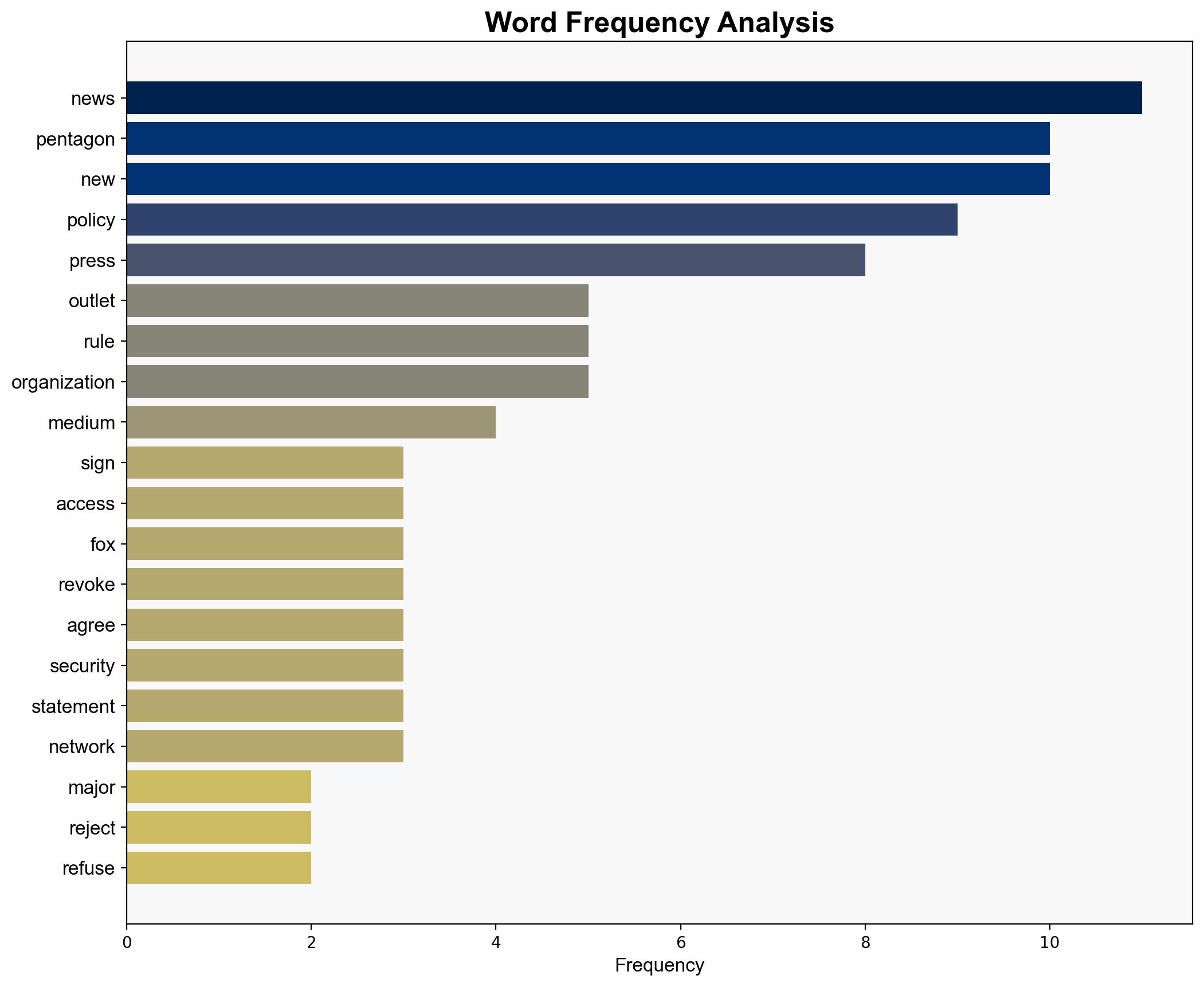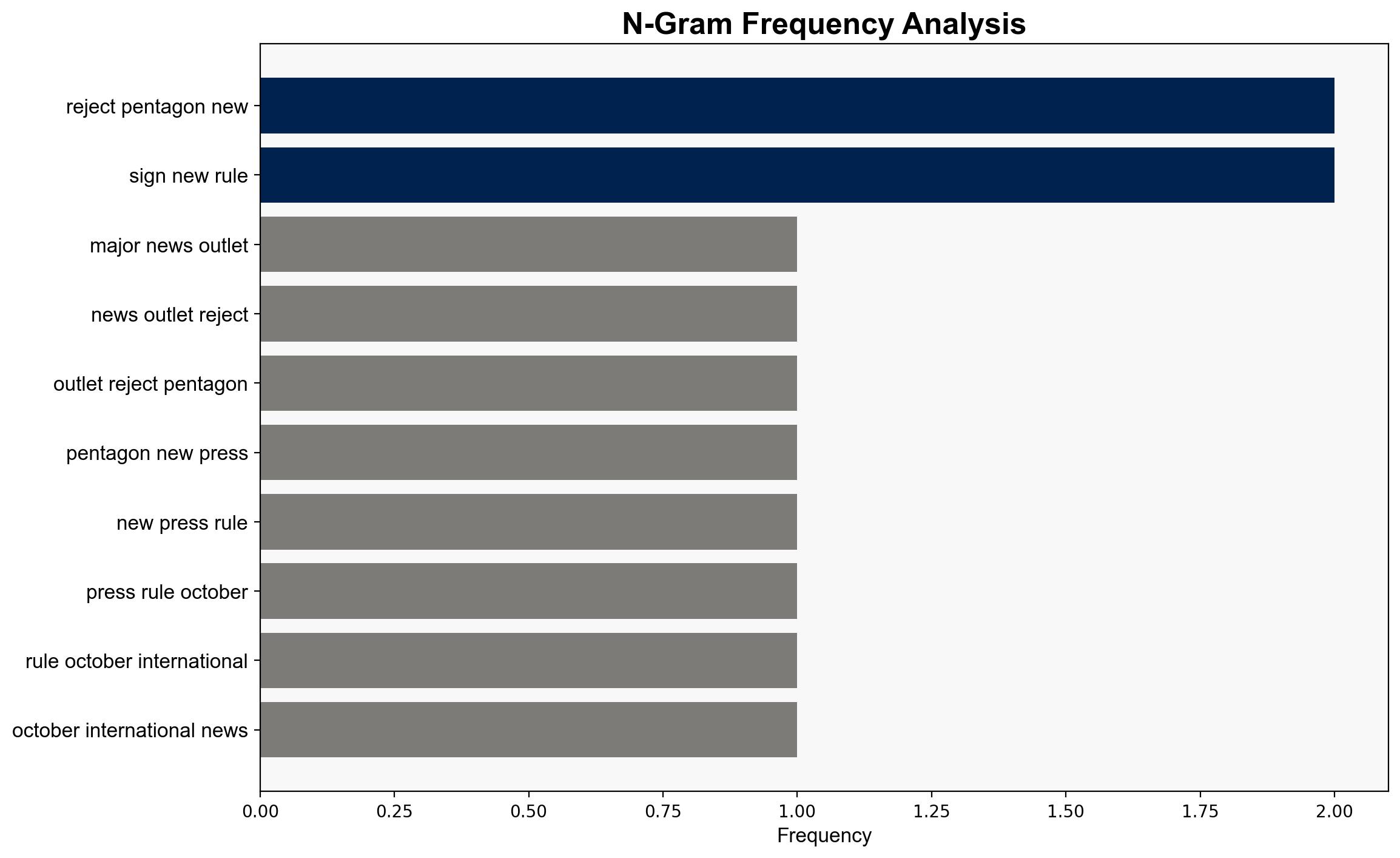Major US news outlets reject Pentagon’s new press rules – DW (English)
Published on: 2025-10-15
Intelligence Report: Major US news outlets reject Pentagon’s new press rules – DW (English)
1. BLUF (Bottom Line Up Front)
The most supported hypothesis is that the Pentagon’s new press rules are primarily intended to enhance national security by controlling sensitive information dissemination. However, this approach risks undermining press freedom and could lead to significant backlash from media organizations. Confidence level: Moderate. Recommended action: Engage in dialogue with media representatives to address concerns and find a balanced approach that safeguards both national security and press freedom.
2. Competing Hypotheses
1. **Hypothesis A**: The Pentagon’s new press rules are designed to enhance national security by limiting the potential for sensitive information leaks.
– **Supporting Evidence**: The rules require journalists to acknowledge security risks and restrict access to classified information.
– **Contradictions**: Major news outlets argue these rules violate free speech rights, suggesting an overreach.
2. **Hypothesis B**: The new press rules are an attempt to control media narratives and limit negative coverage of the Pentagon.
– **Supporting Evidence**: News organizations claim the rules threaten journalistic independence and set a precedent for media gagging.
– **Contradictions**: The Pentagon argues the rules are common sense measures for national security.
3. Key Assumptions and Red Flags
– **Assumptions**:
– Hypothesis A assumes that controlling media access will effectively prevent leaks.
– Hypothesis B assumes the primary intent is narrative control rather than security.
– **Red Flags**:
– Lack of transparency in how “security risks” are defined.
– Potential bias in media reporting due to perceived threats to press freedom.
4. Implications and Strategic Risks
– **Implications**:
– Strained relations between the Pentagon and media could lead to reduced public trust in both institutions.
– Potential for legal challenges against the Pentagon, impacting its operational focus.
– **Strategic Risks**:
– Escalation into broader debates on press freedom and government transparency.
– Possible international condemnation affecting US soft power.
5. Recommendations and Outlook
- Initiate a roundtable discussion with media stakeholders to clarify the intent and scope of the rules.
- Develop a transparent framework for media access that includes security briefings to align understanding.
- Scenario Projections:
– **Best Case**: Constructive dialogue leads to revised rules that satisfy both security and press freedom.
– **Worst Case**: Legal battles and international criticism damage the Pentagon’s credibility.
– **Most Likely**: Continued tension with media, requiring ongoing negotiation and adjustment.
6. Key Individuals and Entities
– Sean Parnell
– Pete Hegseth
– Media organizations: New York Times, Associated Press, Reuters, AFP, Fox News
7. Thematic Tags
national security threats, press freedom, media relations, government transparency





